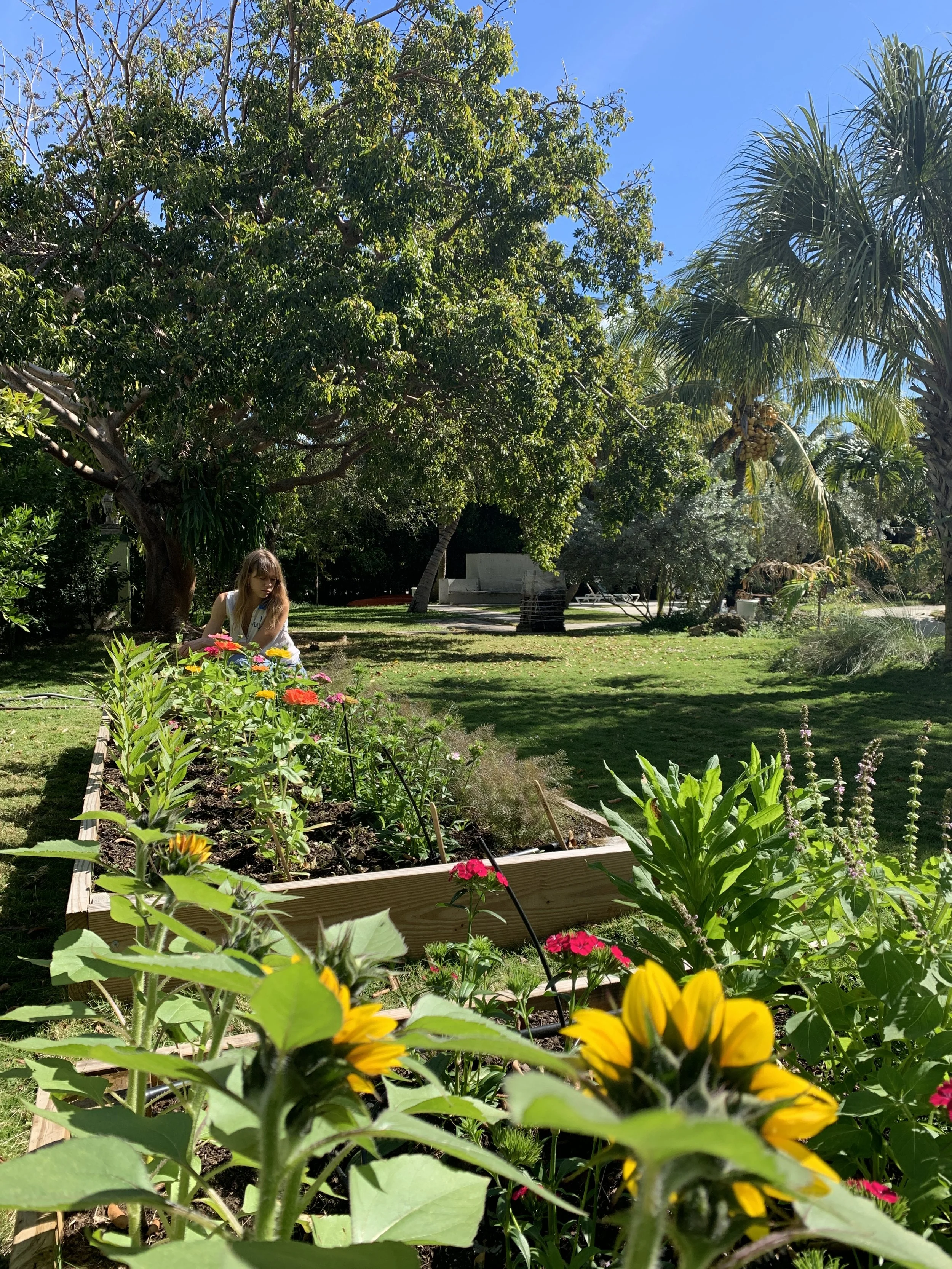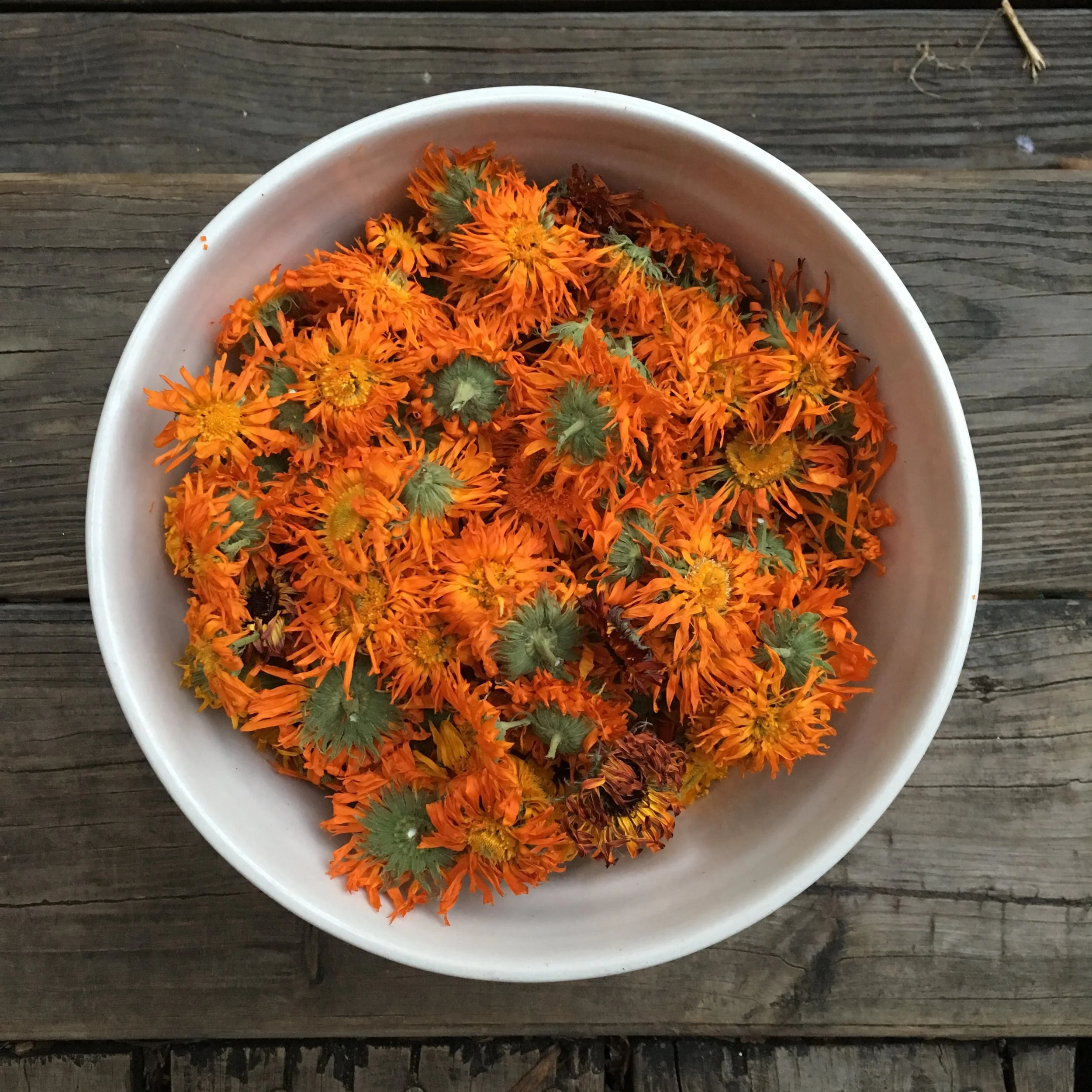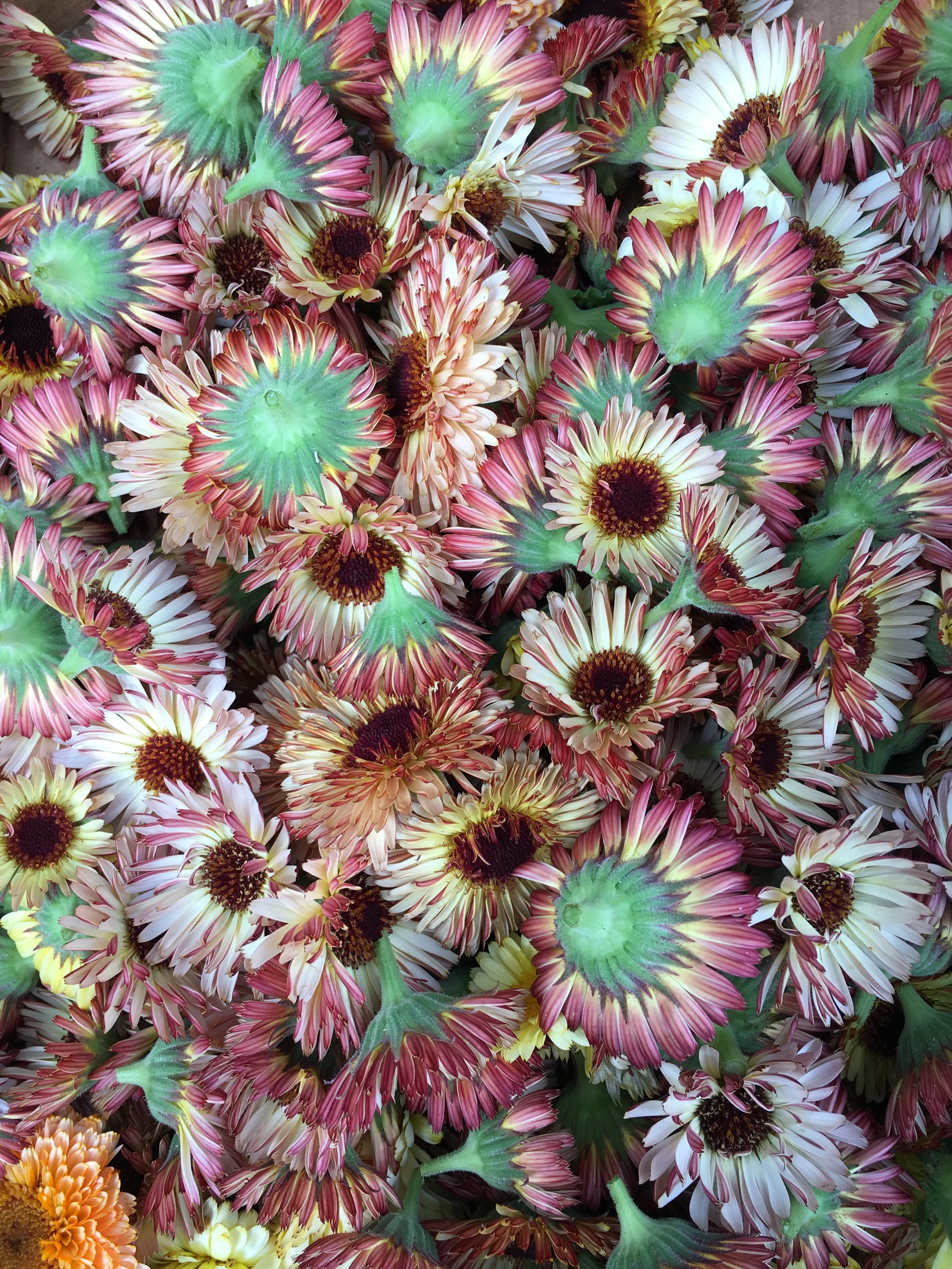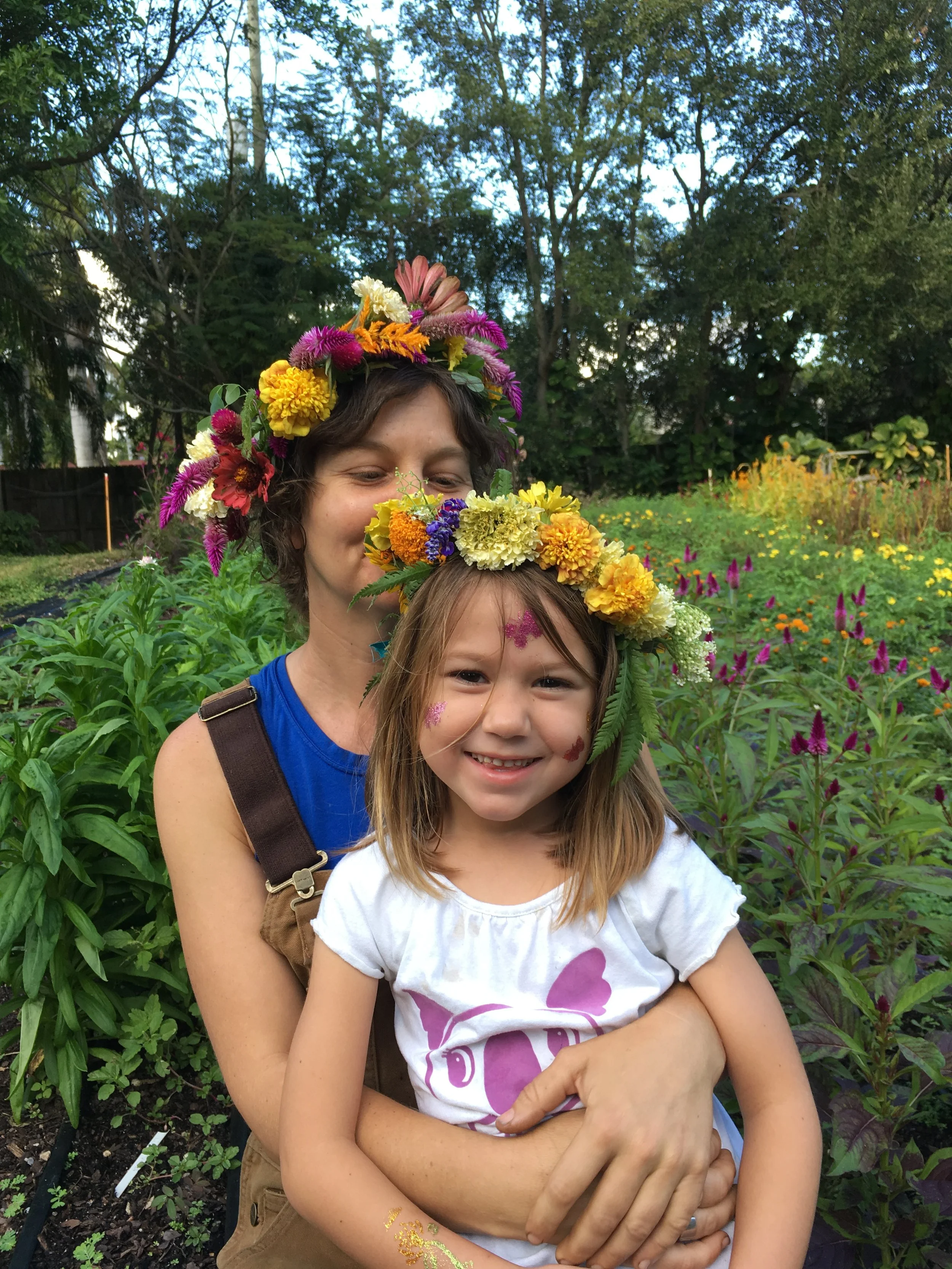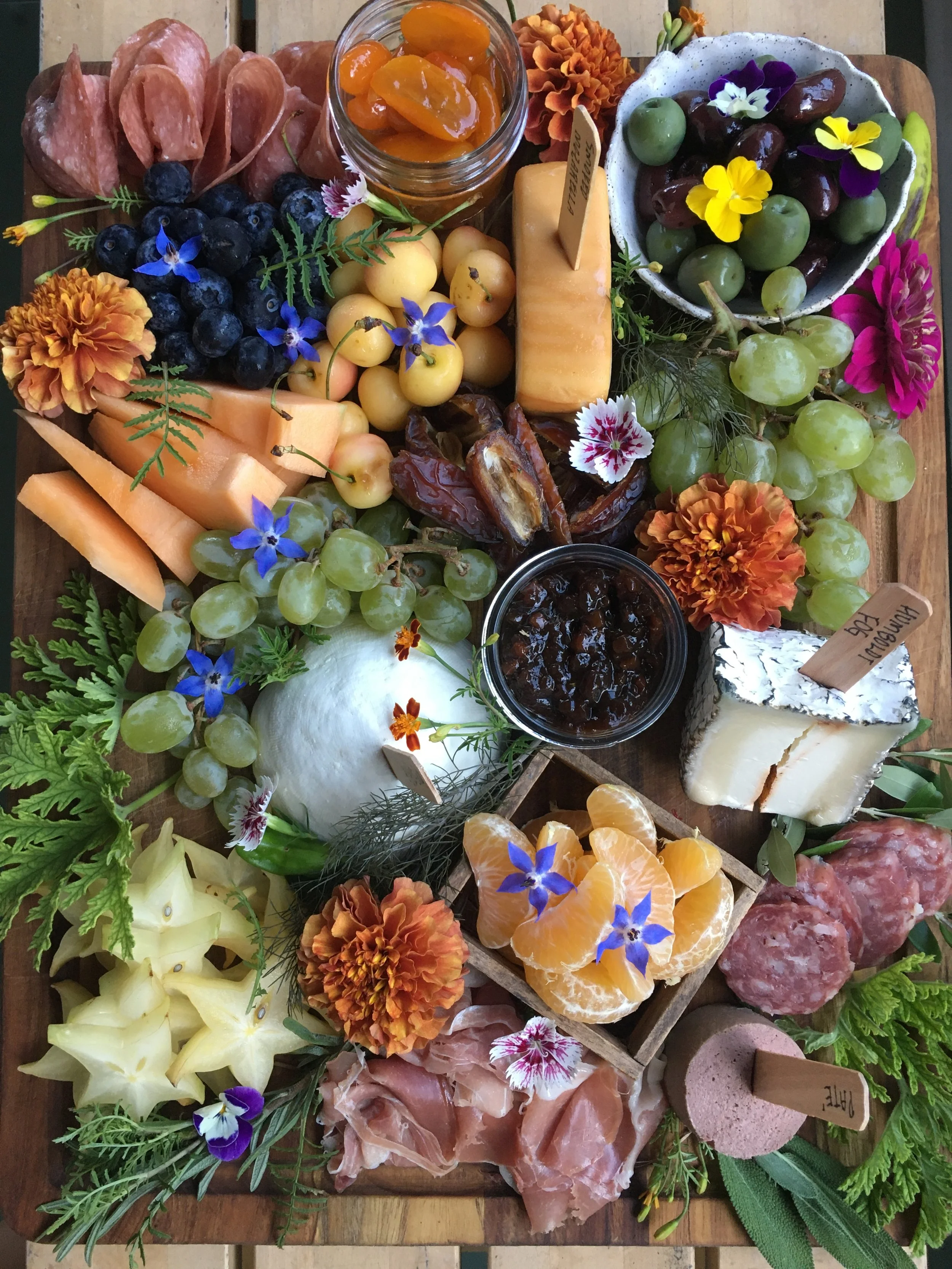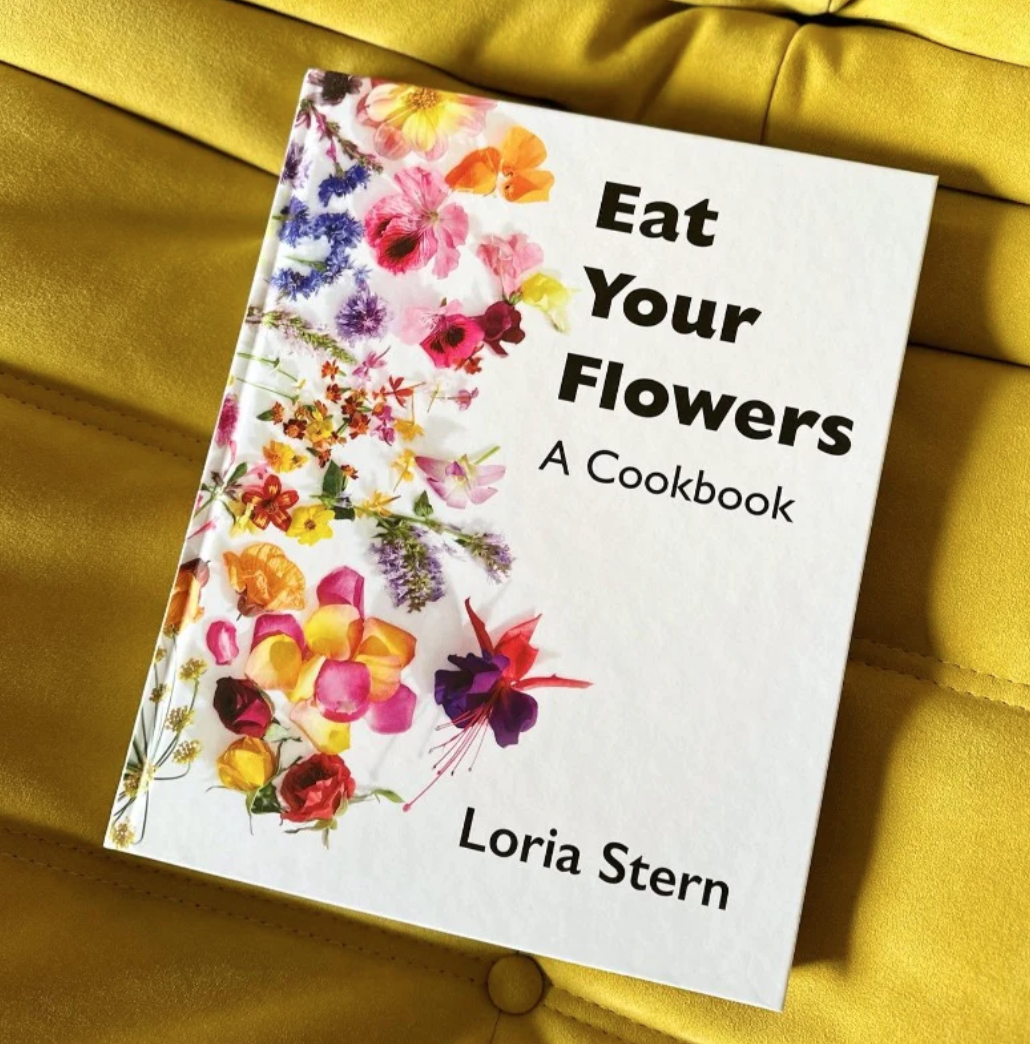January Gardening: Getting Creative with Flowers!
The only thing we at Little River Cooperative love more than growing vegetables is growing flowers! We've always incorporated flowers into our gardens and as most of you probably know our nursery stocks a healthy selection of edible and cut flower starter plants. Over the years we've also had the opportunity to plant purely flower gardens! For example these raised beds we installed and planted with cottage style cut flowers.
Flowers add so much value to any type of garden. They attract pollinators and wild life like bees, butterflies and birds. Native flowers have the added benefit of providing food and habitat for native species which is always a good thing for the environment. In the cut flower garden pictured above we incorporated our state wildflower Coreopsis as well as one of our native salvia varieties, Scarlet salvia. In the small raised bed pictured below you can see a sample of flowers selected for attracting pollinators. They include a mix of native and non-native plants, annuals and perennials. A flower garden like this will go through many phases of blooming, attracting different pollinators at various stages. The perennial plants will most likely be part of the garden for a few years, needing to be pruned here and there. The annual flowers like zinnias and sunflowers will last for one season and then their spot can be replanted with something different. The beauty of growing flowers is seeing all of the changes and evolutions of their arrangement.
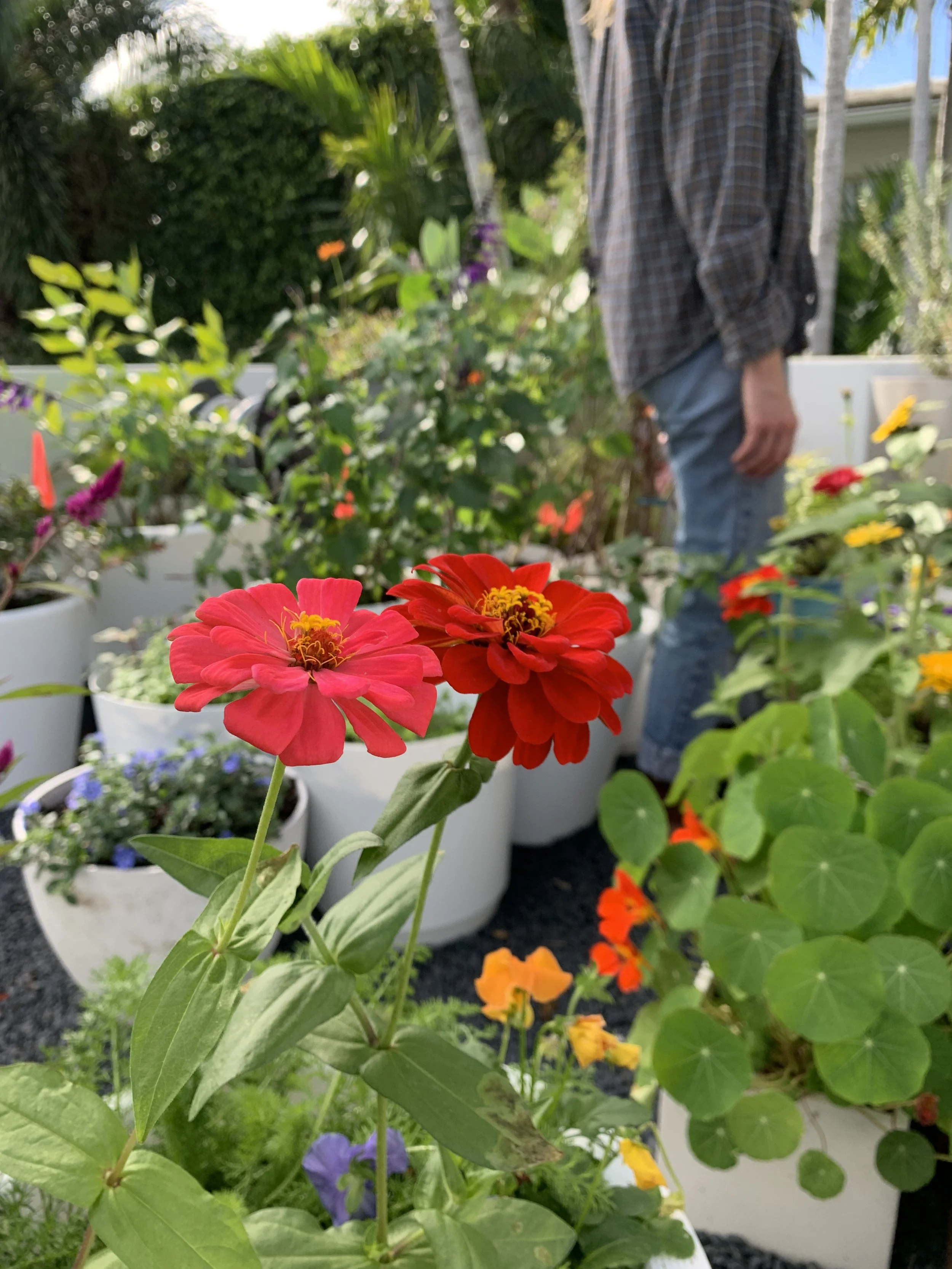

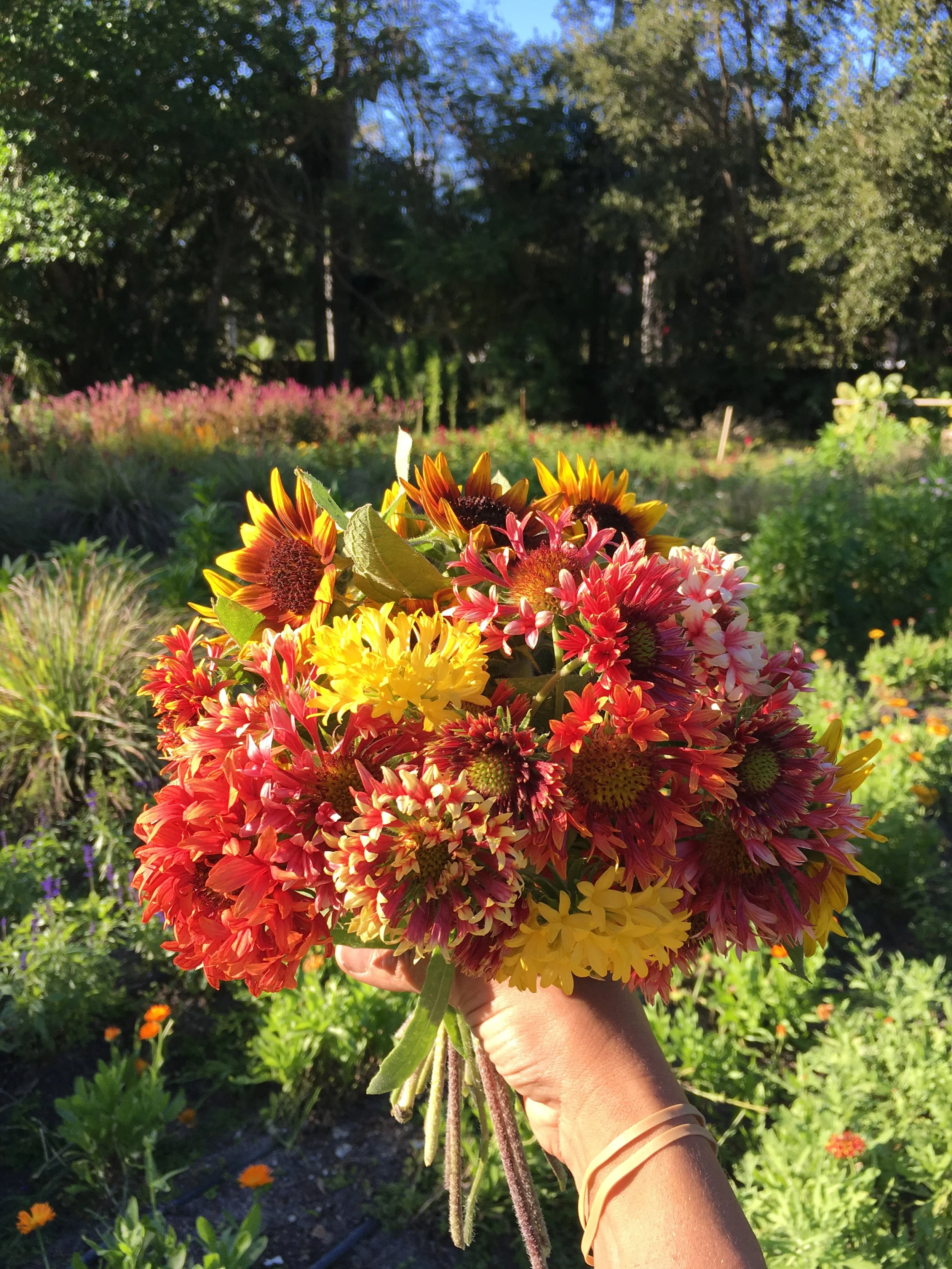
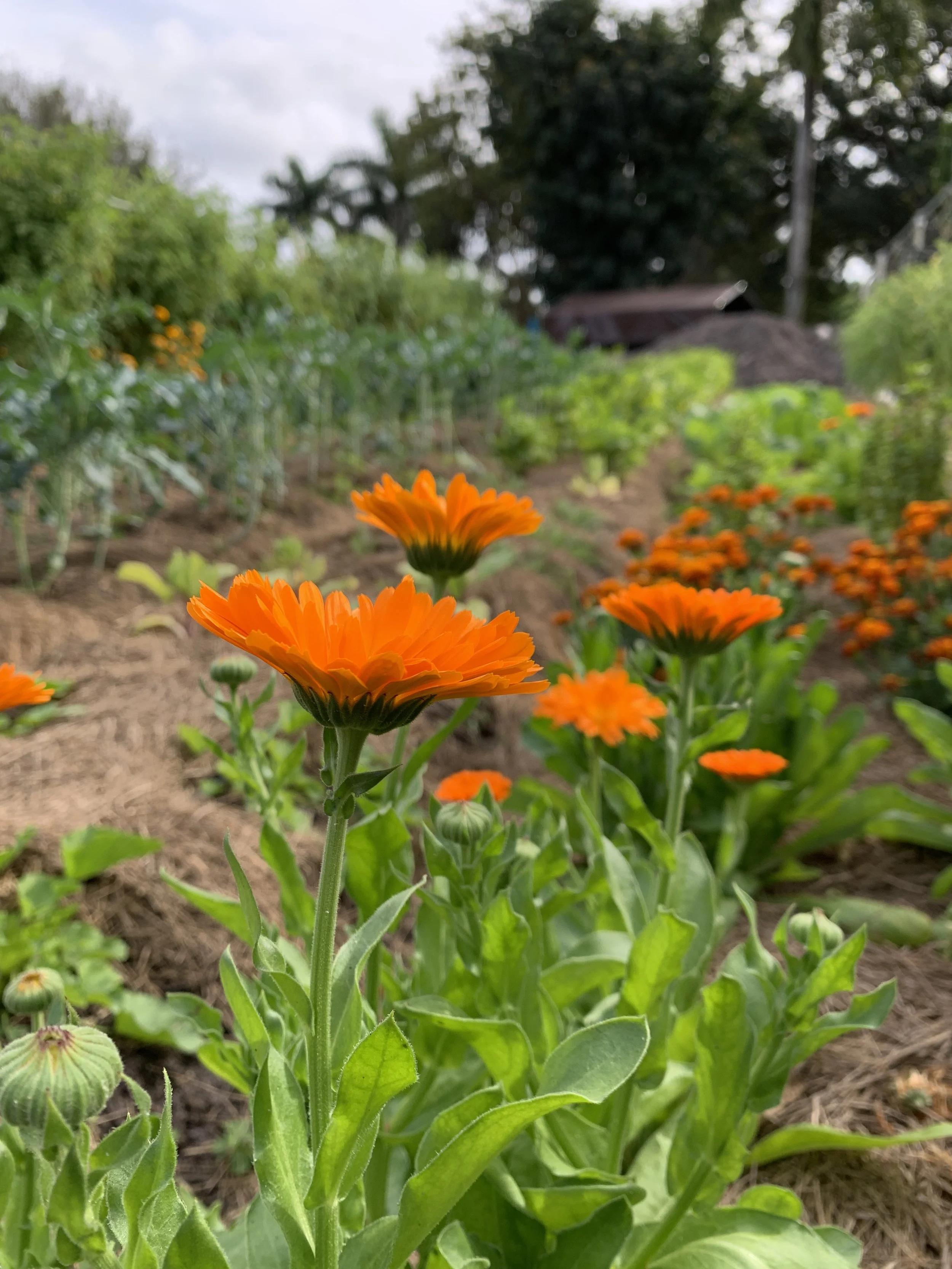
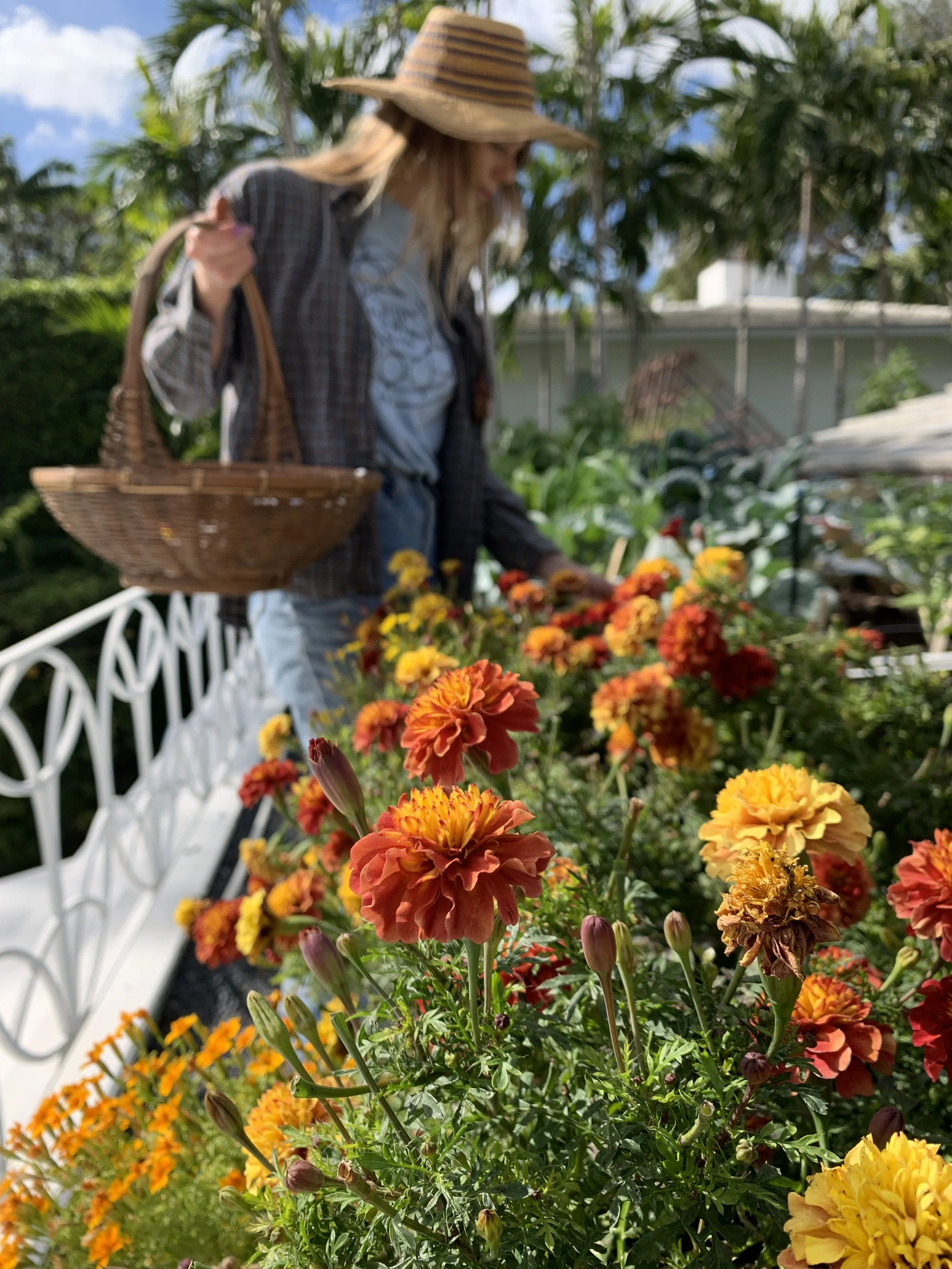




Some of the beauty in growing flowers also lies in their fast changing life cycles. Most annual flowers produce seed pods pretty quickly and then reseed quickly too! Their blooms are incredibly beautiful for a fleeting moment, then transforming into something else. Seed pods are often fascinating in their geometry and engineering. Sometimes their sheer numbers are what impress us the most! As gardeners we are amazed by every step of the plants life cycle, from seed germination to blooming and back to the seed itself. Wild cosmos, pictured below, is one of our favorite wild flowers. They are prolific in many ways; one single plant can get as tall as 4 or 5 feet, blooming profusely for a short period of about a month and making enough seeds for the whole neighborhood! When they are planted very close together (which is what happens naturally when the plant is allowed to drop seeds into the garden) they remain a bit shorter and more compact, which is kind of nice too. Just a few weeks later and the volunteer plants are blooming again for an almost continuous year round flower display.
Flowers add bursts of color and beauty to all types of gardens, wether they are dedicated to native plants or vegetables. Mixed into veggie and herb gardens they break up the sea of green created by things like tomatoes, kale and arugula. They not only break things up for our eyes, but also for insects. It is common practice to use certain flowers to disturb the spread of pest issues. For example, marigolds, nasturtiums and calendula have a strong smell and can be used to "confuse" or "distract" insects that are targeting the leafy greens in your garden. Many flowers are not only beautiful and beneficial for insects, but also useful in our kitchens and medicine cabinets.
Many of the medicinal plants commonly grown in a home garden are annual flowers and can easily be incorporated into an herb or vegetable garden. Tulsi, lemon balm, anise hyssop and chamomile to name a few, are all easy to grow annual plants that compliment veggie gardening. One of our personal favorites is calendula. Calendula is pretty compact plant in the daisy family, easy to grow from seed (p.s. they have the coolest looking seeds ever). They are fast growing and when the flowers are harvested regularly can be extremely productive. One plant alone can provide a handful of blooms every day for a period of 2-3 weeks, if not more! PRO-TIP: to keep any flowering plant in bloom longer you should prune spent flowers on a regular basis. Pruning flowers encourages the plant to continue producing more fresh blooms. We've been growing calendula and drying flowers for many years. The flowers contain a healing oil with many medicinal uses related to the skin. Muriel first started making a coconut oil based salve to use on her baby's booty for diaper rashes. It is great for sunburns, tattoos, dry lips and many other common skin discomforts. Her salve recipe is simple to make at home. Flowers should be harvested daily and set out to dry. You can lay them out to air dry in a single layer as you collect them; when you have enough to make a batch of oil put them in the oven for 15 minutes at the lowest setting (or even just a warm oven after turning it off) to finish drying them completely. A batch of oil can be any size. Choose a jar to use and fill it with dry flowers, then pour coconut oil to the top to cover the flowers. You'll let it sit in a warm place like a window sill anywhere from 2-6 weeks before straining the oil. Giving a jar a gentle shake (flip the jar unside down a few times gently) every once in a while will help to coax the natural oils in the calendula flowers into the coconut oil. Over time the clear coconut oil will turn yellow or orange. Strain the oil using a tea strainer or a piece of muslin or cheese cloth. The strained oil can actually be used as is, but in order to make it easier to apply, store and carry around it is mixed with a bit of beeswax to get a salve consistency. It's always best to use local organic beeswax which you can find a local farmers market. Put your oil in a small sauce pan on very low heat and add chunks of beeswax, stirring and allowing them to melt, lift your spoon from the oil periodically and allow it to cool so that you can test the consistency of your mixture. When you get a consistency you like stop adding beeswax and pour into a jar or small tins. Your salve will keep for months and makes sweet little gifts for loved ones.
Flowers in the garden provide endless possibilities for crafting! Flowers that dry well such as Celosia, Strawflower and Gomphrena are great for making flower crowns. Flower crowns are probably the simples craft project ever and can be done with literally zero materials. Flower stems can be loosely braided or woven together for an impromptu flower crown moment right in the garden! Of course you can always get more involved in making them a bit more "professional" by using floral wire, tape and ribbons, but there's something very satisfying about the ephemeral nature of a 100% garden flower crown. You can add it straight to the compost after wearing for a little while. Doing these types of activities is amazing with kids because they can see the awesome potential of making something out of "nothing". Showing them the cycle of harvesting and composting in one activity is also pretty cool :)
Last but not least is the vast world of edible flowers, probably the category we have explored the most in our nursery and farm. We eat flowers because they are cute and sometimes add a bit of flavor, but lets face it, flowers have very little nutritional value. Don't underestimate the value of cuteness though! Most of us eat with our eyes anyway. Edible flowers will brighten up a dish and turn it into something special. For example, take a salad which has a hard time competing at a holiday table; sprinkle brightly colored petals on it and peopel will be taking pictures of the salad instead of the turkey. Flowers are an inspiration for decorating cakes and cookies, they can really dress up a charcuterie board and pizzas! Some of our favorite varieties for decorating food include violas, borage, dianthus and citrus gem marigolds.
This is a holiday charcuterie board that Tiffany brought to a party a few years ago. A quick visit to her backyard herb garden provided sprigs of thyme, rosemary, sage & bronze fennel to use as a base. She then added all of her fruits, meats, cheeses and nuts and then tucked various edible flowers into nooks and crannies throughout the board to brighten things up!
Tiffany is also well known for the edible flower cookies that we sell occasionally for holidays like Christmas and Easter, and they are SUPER easy to make yourself. She uses this classic sugar cookie recipe and then pulls apart edible flowers into their smaller pieces and uses them to decorate, along with the tiny growing tips of herbs like lavender, sage, thyme, lemon verbena, bronze fennel & mint. Pro tip: the flowers shrink a little bit during baking, so really cover the whole cookie if you want to replicate the look of her cookies. This is the recipe she uses, and it's critical to use something with a short bake time so that the flowers don't get ruined.
If you're looking for even more edible flower inspiration theres an amazing bakery in California that has pioneered edible flower baking and they have a book, online classes, plus its super inspiring to just browse their website for inspiration. They add edible flowers to granola, pies, sugar cubes, chocolate bars, brownies... really its endless the fun creations you can make with just a couple of flowering plants in your garden. Check out Loria Sterns website to buy her book and admire her creations!
To get started adding flowers to your garden, check out the Edible Flowers section of our website and the Cut Flowers section too! Keep in mind that many of these delicate flowering plants only thrive during our winter season, so now is the time to plant them, don't delay.

